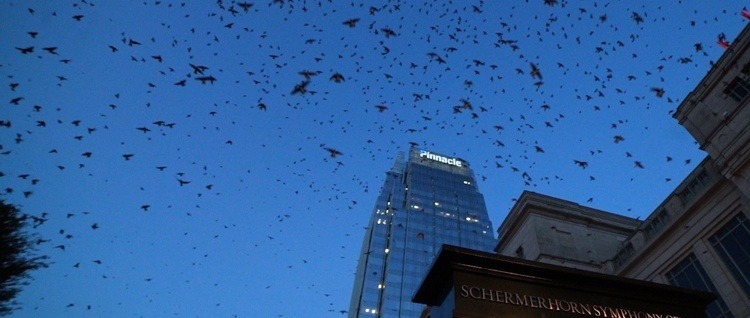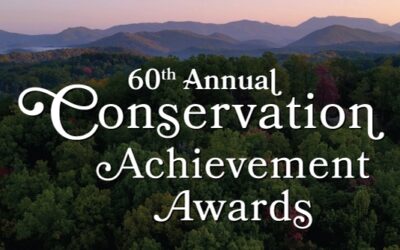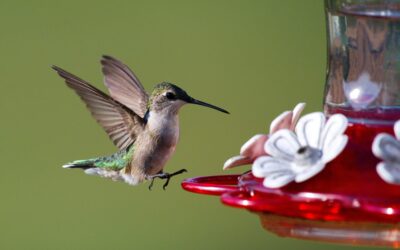In a campaign launched by Tennessee Wildlife Federation, nonprofits in the conservation community are calling on bird lovers and music lovers alike to help the region’s purple martins have an uninterrupted migration by making a donation in support of the Nashville Symphony’s downtown home at tnwf.org/purple.
Donations will be matched dollar for dollar, up to $5,000, by Tennessee Wildlife Federation and The Nature Conservancy in Tennessee.
An estimated 150,000 purple martins are roosting in the trees surrounding Schermerhorn Symphony Center, home of the Nashville Symphony, as they gather before migrating to South America. Lasting only two to four weeks, it is an awe-inspiring sight that draws locals and birders from throughout the region.
This natural phenomenon also creates an expensive mess for the property owner. Like many nonprofits, the Symphony has been hit hard financially by the pandemic and needs a solution. The birds could be driven away cheaply, but that could greatly disrupt their migration.
To save their migration and the Symphony grounds, conservation nonprofits are rallying donations. All proceeds will be given to the Nashville Symphony so it can leave the birds where they are and clean up the mess after they leave.
TAKE ACTION>> Support purple martins and the symphony
“We are profoundly thankful to Tennessee Wildlife Federation, as well as to The Nature Conservancy and other conservation groups, for stepping in and helping raise funds to help us take care of the Schermerhorn. “
Alan D. Valentine, president and CEO, Nashville Symphony
“This will help us stay focused on the critical work of bringing back the musicians and staff who fulfill the Nashville Symphony’s mission of providing great music and education programs to the diverse population of Middle Tennessee,” said Alan D. Valentine.
Each year, the global population of purple martins gather at just 350 roosting sites to prepare for their winter migration to South America.
“Most of the purple martin population no longer nests in natural cavities. The species only continues to exist because individuals invest in and maintain purple martin houses,” said Michael Butler, CEO of Tennessee Wildlife Federation.
“When we saw what was happening downtown, it only seemed right to the Federation to share in the cost of their roosting site when it’s hurting a fellow nonprofit already impacted by the pandemic.”
Michael Butler
One of those 350 purple martin roosting sites has long been in and around Nashville. The species is protected by the Migratory Bird Treaty Act.
“Our focus is on wildlife habitats and, sometimes, that habitat happens to be in downtown Nashville,” said Terry Cook, state director of The Nature Conservancy in Tennessee. “A purple martin colony is typically around a dozen to two dozen birds. The purple martins roosting around the Schermerhorn represent 6,000 to 12,000 nesting colonies. All of these nesting colonies are a result of people erecting nest boxes or gourds specifically for martins.”
“We’re proud to support these birds and the Symphony in this critical step of their migration. Without our care, purple martins don’t survive as a species.”
Terry Cook




